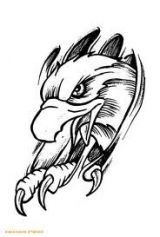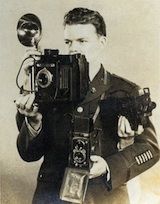- Forum
- General Discussion | Introductions | Off Topic Forum
- Photography General Discussion
- Importance of a flash?
Importance of a flash?
-
 Topic Author
Topic Author
- Absolute 99
- New Kid On The Block
-
- Canon xsi
- Followers: 8
- Posts: 39
-
Points:
0
Post #137548
In the last few days I got contacted by about 4 potential clients and I'm thinking. Is the the time to get a flash? I always charged either nothing or very little.. So I'm charging more now and perhaps my pictures should have a heightened level of professionalism? What do you think ?
-

- effron
- Newbie
- Followers: 1623
-
Points:
129640
Post #137551
Bounce is great for indoors sometimes and is not good at times (colored ceilings or ceiilings that are too high) but if you can put the flash head straight up and bounce the light off a white card then you aren't losing too much light by the time it gets to the subject. Diffusers should give you more light than bounce which is softer than the direct fired flash.
-
 Topic Author
Topic Author
- Absolute 99
- New Kid On The Block
-
- Canon xsi
- Followers: 8
- Posts: 39
-
Points:
0
Post #137554
-

- Becky pics
- New Kid On The Block
-
- Canon mark III
- Followers: 7
- Posts: 42
-
Points:
0
Post #137555
Some people never shoot without a flash and some will never use a flash.
In a way it depends what you shoot. In your case, considering the nature of headshots (flat lighting for the most part) it is hard to imagine you doing it well without any kind of light or light modifier. Light modifiers, in my book, include flash units, and the accessories that go on to shape the light. It also includes reflectors and diffusers.
Outdoors, there are three ways to modify light. Add a fill flash (usually off camera), use a reflector, or use a diffuser. All 3 can achieve fairly similar results if used properly. Often used to control the harshness of daylight, they can also be used to totally change the light if your flash or strobe can overpower the daylight.
Indoors is a different story. Yes, you can use a window as a light source but most often, you will need a flash eventually.
-

- rmeyer7
- Master of the Lens
-
- Canon 6D, Canon 5D mk. ii, Canon 50D
- Followers: 105
- Posts: 1640
-
Points:
2086
Post #137683
It sounds like the look you're going for could be accomplished with butterfly lighting and possibly a reflector. That might sound complicated...but you can accomplish it with a flash unit, a cheap extension cable (if you can't afford a wireless trigger - I have one with a tripod mount so you don't even need a special stand for it), a softbox that fits over your flash unit and an inexpensive reflector. This type of lighting works well for headshots.Absolute 99 wrote: I don't want it to look like it really does in the room... using normal everyday lights. I want full soft light hitting the face instead of indoors lights causing shadows etc. Or daylight hitting one side of the client's face.
Set up the flash with the softbox above your model/subject, pointing down at an angle directly in front of him/her. Do some test shots with a friend to get a feel for how much power your flash needs, your aperture and shutter speed, how high to set your light, etc. (Don't put the light too high, or you'll have a long shadow under the nose and not very pleasing shadows around the eyes.) Once you get it tweaked just right, you'll have the nice, soft, even light that you want.
However...you're going to have some shadow under the chin. If you don't like that, you can counter it with a reflector below the model/subject. Of course this all will take some practice in terms of getting your key light (the flash) and modifier (the reflector) positioned just right, getting the right camera settings, etc. But it's well worth the investment in the equipment, and the time you'll spend learning and perfecting the technique.
-

- MLKstudios
- Banned
-
- D800 ;-)
- Followers: 72
- Posts: 4480
-
Points:
2
Post #137692
Total cost, less than $50. And being a continuous light, will let you see EXACTLY where the light and shadows form. It's a great learning tool. Before you spend $1000 on strobes.
Matthew
Note: you can use it for ANY lighting style.
Matthew L Kees
MLK Studios Photography School
www.MLKstudios.com
[email protected]
"Every artist, was once an amateur"
-

- rmeyer7
- Master of the Lens
-
- Canon 6D, Canon 5D mk. ii, Canon 50D
- Followers: 105
- Posts: 1640
-
Points:
2086
-

- MLKstudios
- Banned
-
- D800 ;-)
- Followers: 72
- Posts: 4480
-
Points:
2
Post #137715
A lantern is a great teaching tool for portrait lighting. Use the light as close as possible to the face, and be extra careful the light doesn't touch the sides of the lantern when it's on. The bulb should hang centered.
Matthew L Kees
MLK Studios Photography School
www.MLKstudios.com
[email protected]
"Every artist, was once an amateur"
-

- effron
- Newbie
- Followers: 1623
-
Points:
129640
-

- cod
- Snapobsessed
- Nikon D300S
- Followers: 71
- Posts: 484
-
Points:
1165
Post #137928
- Forum
- General Discussion | Introductions | Off Topic Forum
- Photography General Discussion
- Importance of a flash?
Latest Reviews
The Fujifilm XT5 is a 40MP mirrorless camera capable of 6.2K video at 30p. With those specs, it’s an ideal choice for photographers needing a camera to pull double duty for imaging and video.
The Canon EOS R100 is an entry-level mirrorless camera introduced in 2023. But just because it’s an entry-level camera doesn’t mean it’s a bare-bones camera. Find out why in this review!
Nikon’s retro-looking Nikon Zfc is anything but retro. Under its classic body is a host of features and amenities that make it a worthwhile compact mirrorless camera for 2024.
The Canon EOS R50 is one of the newest R-system cameras from Canon. Is it worth your money? Find out all the details you need to know in this comprehensive review.
Forum Top Posters
-
1TCav 7 posts
-
2Razky 4 posts
-
3Sawyer 3 posts
-
4Kenta 3 posts
-
5AstralArti... 3 posts
-
6CharleyL 3 posts
-
7Overread 3 posts
-
8Jason Stevens 3 posts
-
9Moe 3 posts
-
10Randy Shaw 3 posts
Latest Articles
With these simple yet effective beginner photography tips, you can avoid some of the common mistakes beginners make and get improved results with your images.
Urban photography is a genre showcasing features in urban settings. You can photograph people, architecture, mass transit, and many other subjects. Learn how to do so in this guide!
The Nikon D850 might be an older DSLR, but it was ahead of its time when it debuted in 2017. That means it still has plenty of firepower to compete with today’s powerful mirrorless cameras.
The best beginner camera isn’t the same for everyone. That means having choice is of the utmost importance. In this guide, explore five excellent beginner camera options for 2024 and beyond.
Child portrait photography is a unique undertaking requiring special skills and talents to get the best results. Start mastering this photography niche with these essential tips!
The Fujifilm XT5 is a 40MP mirrorless camera capable of 6.2K video at 30p. With those specs, it’s an ideal choice for photographers needing a camera to pull double duty for imaging and video.
Using leading lines in photography helps improve the composition by drawing viewers in and leading their eye from the foreground to the background. Explore some fine examples of this in this guide!
The Insta360 has one of the best lineups of action cams and 360-degree cameras. With these Insta360 accessories, you can elevate your photography and videography game!














